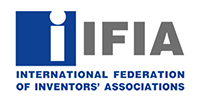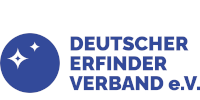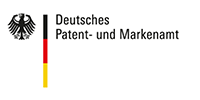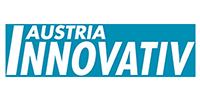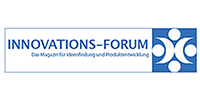iENA New Products show 2025
from October 30, 2025
Below we present a "nano" cross-section of the more than 540 "Ideas - Inventions - New Products" at this year's international trade fair iENA 2025.
The following inventions from Germany were presented to media representatives at the "Novelties Presentation" after the iENA 2025 press conference in Nuremberg on October 30.
You can find images in their original size here
Let us inspire you!
Fibre-reinforced plastic spinning bobbin for textile wet spinning process

Bernd Zimmer, Dipl.-Ing., Managing Director, Goepfert Werkzeug & Formenbau GmbH & Co. Teilefertigung KG
Inventor team:
Bernd Zimmer, Dipl.-Ing., Prof. Dr.-Ing. Wolfgang Nendel, Hartmut Führer, Dipl.-Betriebswirt, Tino Zucker, Dipl.-Ing., Knut Morgenstern, Dipl.-Ing., Mario Böhm, Dipl.-Ing.
Chemnitz University of Technology, Chair of Lightweight Structures and Polymer Technology
ERiNET joint participation
Brief description:
Development of a new manufacturing process for the production of spinning bobbins within the cellulose fibre manufacturing process. In addition to the basic development of a suitable material compound, taking into account the high chemical and mechanical stress values, a suitable manufacturing process, including the associated tool development, had to be carried out.
Analysis system for aggregates harmful to concrete
Dr.-Ing. habil. Daniel Garten, Head of Testing Technology and AI Division, GFE - Gesellschaft für Fertigungstechnik und Entwicklung Schmalkalden e.V.
Inventor team:
Dr.-Ing. habil. Daniel Garten (GFE e.V.)
Dr Elske Linß (MFPA Weimar)
Dr Galina Polte (TU Ilmenau, Quality Assurance and Industrial Image Processing)
Dr Katharina Anding (IDMT Fraunhofer Ilmenau)
ERiNET joint participation
Brief description:
The optical analysis device enables automated detection of concrete-damaging components in gravel or rock aggregates using machine learning and helps to prevent damage to the subsequent structure.
Hybrid tool holder with integrated damping using the LPBF process

Dr.-Ing. habil. Daniel Garten, Head of Testing Technology and AI, GFE - Gesellschaft für Fertigungstechnik und Entwicklung Schmalkalden e.V. (GFE)
Inventor team:
Dr.-Ing. habil. Daniel Garten (GFE e.V.)
Steffen Lutze
ERiNET joint participation
Brief description:
Innovative hybrid tool holder with integrated damping, manufactured using the laser powder bed fusion (LPBF) process. Direct manufacturing eliminates assembly work and the production of multiple individual parts. The integrated damping system reduces complexity, shortens process steps and increases both efficiency and manufacturing quality.
Innovative solar thermal towers for energy generation and autonomous security solutions

Matea Energie und Sicherheitstechnik, Gila Günaldi, Salzhausen
A new generation of solar thermal towers that combine clean energy generation with intelligent security technology.
Flip & Dry – an innovative, foldable bottle drying rack made of stainless steel with an antibacterial Swiss stone pine insert

Alex Thommen, Anré Lüthi,
Flip&Dry® is the smart bottle dryer for at home, on the go and when camping, and is suitable for baby bottles, sports bottles and drinking bottles made from all materials. The foldable, telescopic design allows for space-saving storage – it fits in any drawer.
The integrated Swiss stone pine wood (Pinus cembra), also known as the ‘Queen of the Alps’, has an antibacterial effect and ensures a fresh and hygienic bottle interior.
rhooky – innovative, elegant towel and multi-purpose hook

Björn Oswald, rhooky e.K.
Germany
rooky is an innovative and elegant multi-purpose hook made from a variety of materials. It combines the following advantages:
- Easy to hang and remove
- Secure hold without slipping
- Timeless, elegant design
- Modern, rounded shape
- High, durable quality
- Highly corrosion-resistant
- Can also be used for textile items without loops by clamping
- Fastening with or without drilling
- Sustainable thanks to long service life
- Fully recyclable
Device for keeping the water drainage channel clean

Karl-Heinz Bilz, Frankfurt
Deutscher Erfinderverband e.V.
Sail energy - Offshore wind drive system for producing H₂

Gunter Kreft, Bimöhlen
Erfinderclub Schleswig-Holstein e.V.
Germany
Sail-Energy is a new, patented floating offshore wind-to-hydrogen system.
It revolutionises wind energy generation and utilises it in a combined floating system for hydrogen production.
The wind energy generated is converted into electricity in underwater turbines and then into hydrogen. The hydrogen is stored on the Sail-Energy element.
The wind energy captured is converted into electricity in underwater turbines and then into hydrogen. The hydrogen is stored on the Sail Energy element or on the towed conversion unit.
See information sheet in German
Micro scissors for fine preparation

Gunter Kreft, Bimöhlen
Erfinderclub Schleswig-Holstein
Germany
Micro scissors/scissors that can be held firmly with one hand with minimal effort, while also enabling precise cuts to be made.
Cable reel and extension cable in one

Gunter Kreft, Bimöhlen
Erfinderclub Schleswig-Holstein
Germany
A combination of a simple extension cable and a cable reel. In principle, a conventional cable reel is modified so that the reel and the cable can be easily separated and reconnected.
The core of the reel drum is provided with an opening in the cylindrical outer surface, in which there is a permanently mounted plug that connects to the sockets on the side.
This integrated plug and the sockets on the side are connected to each other by means of a standard extension cable, so that it can then be used as a cable reel with several sockets. Now the cable can be rolled up without any problems.
This means that the cable can be used as a cable reel or, alternatively, in an unrolled and disconnected state as an extension cable.
Smokeless charcoal table grill for balconies, picnics and gardens

Jiulai Zhang, Dr. Zhangs GreenBBQ, Reutte
Austria
Smoke-free grilling technology with a 3-bar slanted grill rack
Removal and prevention of verdigris in brass instruments

Annabell Pscheidt, Lorenz Schwarz, Mildred Scheel School, Böblingen
ARTUR FISCHER INVENTOR AWARD
Verdigris in trumpets is harmful to health and difficult to remove. Our method using ascorbic acid and ultrasound cleans effectively – without the need for expensive professional cleaning. A special coating provides additional protection against new deposits. For a healthy sound and long service life.
See information sheet in German 1
See information sheet in German 2
All-in-One puncture device

Hani Al-Khazzan
ARTUR FISCHER ERFINDERPREIS
The insertion of a cardiac catheter is a demanding medical procedure that can lead to complications. The aim of the invention is to minimise the time required for the puncture procedure and to ensure the puncture position. To this end, the puncture needle, guide wire and aspiration syringe are combined into a single all-in-one puncture instrument.
See information sheet in German
ULMER system / Multi-part, variable suspension system

Steinbeis-Transferzentrum Infothek, Villingen-Schwenningen
ULMER tidiness brings structure to chaos. The modular system adapts to any space and any need – whether in the garage, basement or garden shed. Intelligent,
adjustable elements create order in even the smallest of spaces. Stable, flexible and durable – the clever solution for more clarity and space.
See information sheet in German
AeroViva – smart textile technology for passive cooling and moisture balance

Steinbeis Transfer Centre Infothek, Villingen-Schwenningen
The modular evaporation system uses textile layers for passive air humidification and cooling. The combination of Lyocell (moisture transport), 3D Air Mesh (distance + air circulation) and Softshell GTX (PTFE membrane, drip protection) creates a self-regulating moisture flow. Removable magnetic or clamping strips allow for easy maintenance and washability, while capillary action and diffusion work without the need for energy.
See information sheet in German
Sol Mano – sun cream applicator

Danielle Kokkelink, Sol Mano UG, Emlichheim
Germany
Steinbeis Transfer Centre Infothek, Villingen-Schwenningen
Sol Mano finally makes it easy to apply sun cream to your back. The telescopic, ergonomically shaped handle and interchangeable application module ensure convenient, clean and even application – anywhere, anytime.
See information sheet in German
five4six / Pouring aid for party kegs

Michael Tönnies, WT Design UG, Molbergen
Steinbeis Transfer Centre Infothek Villingen-Schwenningen
This innovative, modular pouring aid was developed specifically for 5-litre party kegs and enables ergonomic, clean and safe tapping. A sturdy barrel holder holds the keg, while a rotating beverage container holder with several glass holders facilitates simultaneous filling. The dispensing station can be assembled without tools, can be stored in a space-saving manner and, with its eye-catching design, is an ideal advertising medium for brands, events and promotions.
See information sheet in German
